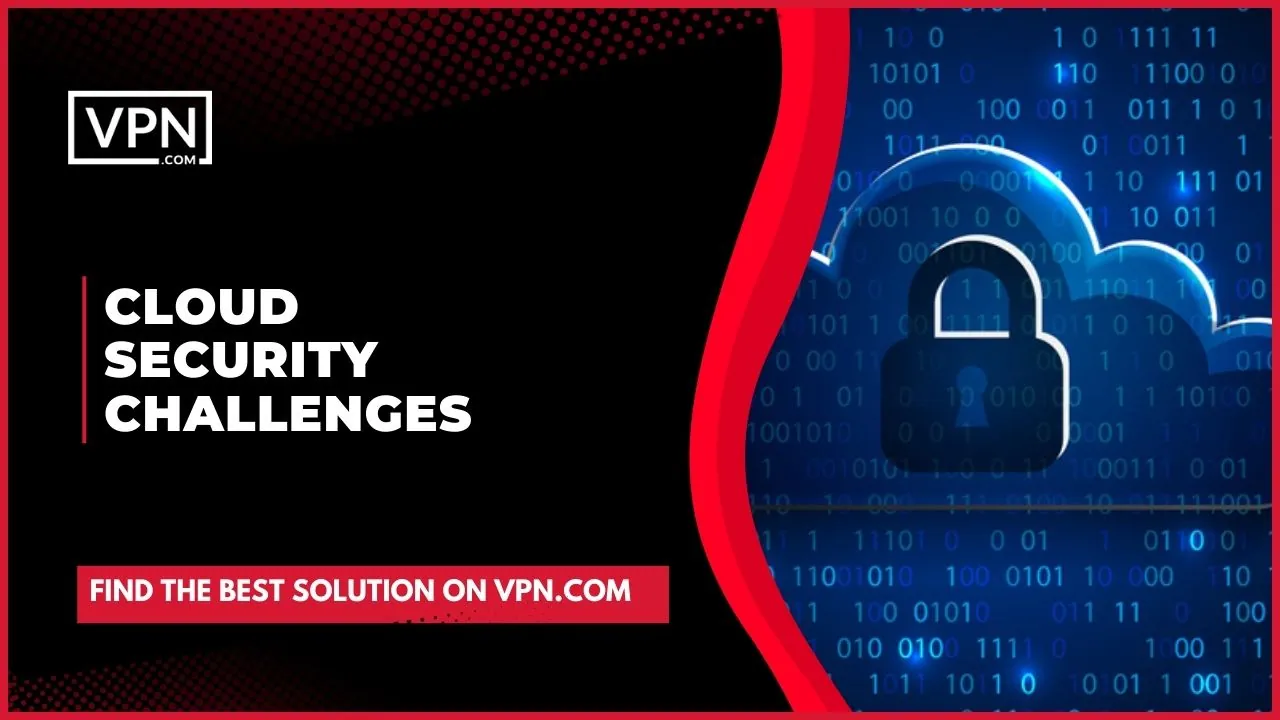Cloud Security Analytics

Data security is more important than ever as businesses move to the cloud. Cloud security analytics monitors, collects, and analyzes data to identify cloud security threats and vulnerabilities. Cloud security analytics enables businesses to detect and respond to cyber assaults more quickly, increasing security. Data breaches can damage reputation, money, and legal standing. Cloud security analytics is vital for any firm protecting secret data on the cloud.

Signup at our #1 host
- Reduce Costs
- Shorten time to market
- Increase efficiency
- Improve agility & consistency
What Is Cloud Security Analytics?
Cloud security analytics is vital for monitoring and securing cloud infrastructure. Complicated algorithms and machine learning are used to collect logs, network traffic, and user behavior. Cloud security analytics can detect real-time threats, anomalies, and vulnerabilities by analyzing this data. SIEM, NTA, and UEBA tools comprise this formidable instrument.
These components give a comprehensive view of the organization’s cloud security posture, allowing security teams to promptly notice, analyze, and resolve possible security threats. Cloud security analytics improves cloud visibility, threat detection, and security posture.
Cloud Security Challenges

Cloud computing has resulted in breakthrough technological advancements, allowing organizations to store, analyze, and retrieve data from any place. However, these advantages come with possible security issues that must be handled. Unauthorized access, data breaches, and account hijacking are all frequent security issues. Effective cloud security analytics are required to counteract these threats.
Organizations may use the correct tools to proactively monitor and identify possible dangers before they become severe. Implementing strong cloud security measures may ensure that data remains confidential, that data integrity is preserved, and that users have peace of mind when using cloud services.
Data Breaches And Data Loss
The accessibility and convenience of the cloud have revolutionized how businesses store and access data. However, inherent hazards accompany these benefits. Data breaches pose a significant hazard to cloud security, and there are a variety of causes and occurrences of this problem.
The most frequent is human error. In some instances, it can be as simple as neglecting a password or accidentally granting unauthorized access to a malicious person. In addition, cybercriminals frequently exploit software vulnerabilities to access sensitive data.
Regardless of the cause, the effects of data breaches and data loss are substantial and can have lasting consequences. Fortunately, these risks can be mitigated by instituting stringent security protocols, conducting regular audits, and investing in cutting-edge security software. Businesses must prioritize data security to protect sensitive data more than ever.
Insider Threats
As businesses move their data and applications to the cloud, insider threats become more prevalent. Insider threats can harm a company’s reputation, finances, and success.
Understanding dissatisfied workers, contractors, and partners with access to sensitive information can help recognize and prevent these types of threats. Companies may safeguard cloud assets by using efficient security methods like constant monitoring and access controls.
Misconfigured Cloud Environments
Cloud computing lets organizations use computational resources without buying pricey gear, changing how they function. Cloud misconfigurations can cause security breaches and other issues. Cloud setting mistakes include weak passwords, insecure data storage, and improper access controls.
Find these misconfigurations to fix them. They can be remedied by correctly establishing the cloud environment or by updating security rules to best practices. Businesses may protect and maximize cloud computing’s benefits by following these procedures.
Compliance And Regulatory Issues
Cloud computing has become an important part of all kinds of businesses in the modern digital world. Although the cloud has many advantages, it also presents a number of regulatory and compliance issues.
Cloud compliance and regulatory issues can arise from government regulations such as HIPAA or GDPR, and industry-specific standards like PCI DSS. To address these issues, businesses need to have a robust cloud compliance strategy in place.
This includes conducting regular risk assessments, complying with regulatory requirements, and implementing security controls to protect sensitive data. Businesses may successfully handle cloud compliance and regulatory obstacles and fully benefit from the cloud’s potential advantages with good preparation and implementation.

Signup at our #1 host
- Reduce Costs
- Shorten time to market
- Increase efficiency
- Improve agility & consistency
Cloud Security Analytics Techniques

Cloud security is crucial today. As businesses store and analyze sensitive data in the cloud, cloud security analytics are more important than ever. So basically, machine learning is all about using fancy math to find patterns and weird stuff in really big piles of data. ML helps companies predict security problems.
Data analytics can monitor cloud activities and notice strange behavior, while AI can automatically recognize and respond to threats. These cutting-edge methods can protect cloud infrastructure against cyberattacks.
Machine Learning In Cloud Security Analytics
Over the past few years, the area where machine learning and cloud security analytics meet has become more and more important. One important part of this field is using different kinds of machine learning algorithms to look through a lot of data for trends and outliers that could be signs of security risks.
These procedures can be monitored or unsupervised. Real-world uses of machine learning in cloud security analytics range from detecting scams and network intrusions to analyzing malware and spotting strange behavior.
Even though putting these technologies to use can be hard, their ability to improve security and fight against threats shows that machine learning applications in cloud security analytics have a bright future.
Data Analytics For Cloud Security
In recent years, data analytics has grown increasingly important for cloud security. Analytics must be used to find and stop cybersecurity risks due to the increasing volume of data being kept in the cloud. Machine learning techniques, behavior analysis, anomaly detection, and predictive modeling are a few of the main components of data analytics for cloud security.
These characteristics make the cloud a more secure setting for managing and storing data by enabling security teams to identify possible security threats and take action in real-time. Network security, data privacy protection, and identity and access management are examples of real-world data analytics applications for cloud security.
Companies can avoid data breaches and guarantee regulatory compliance by deploying these applications. In general, data analytics is essential for enhancing cloud security and defending sensitive data from online threats.
Artificial Intelligence For Cloud Security
Cloud security relies more and more on data analytics. Analytics are needed to detect and prevent cybersecurity problems as cloud data grows. Cloud security data analytics includes machine learning techniques, behavior analysis, anomaly detection, and predictive modeling. These characteristics allow security teams to detect and mitigate security threats in real time, making the cloud a safer data storage and management environment.
Data analytics for cloud security is used for identity and access control, network security, and data privacy. These apps help companies avoid data breaches and comply with rules. Data analytics helps secure cloud data from cyberattacks.

Signup at our #1 host
- Reduce Costs
- Shorten time to market
- Increase efficiency
- Improve agility & consistency
Benefits Of Cloud Security Analytics

Organizations must prioritize identifying and preventing security dangers as technology develops and cyberthreats become more sophisticated in order to stop them before they may do irreparable harm. In order to guarantee the security and integrity of sensitive data, systems, and networks, early detection of security risks is essential.
Businesses may lessen the effects of security incidents and resume operations as soon as feasible by putting effective incident response procedures into place.Regulatory compliance is extremely critical in today’s corporate world, and organizations must ensure that they are following all applicable rules and regulations.
A greater understanding of cloud security is also becoming more crucial as more businesses migrate their infrastructure and data there. Businesses that place a high priority on security, incident response, compliance, and cloud security will ultimately be better able to safeguard their assets and keep a competitive edge in the market.
Early Detection Of Security Threats
Cloud security analytics is quickly turning into a priceless resource for businesses of all kinds trying to strengthen their cybersecurity initiatives. Early detection skills can save businesses time and money while reducing the potential impact of a security breach by proactively looking for potential vulnerabilities and spotting malicious behavior before it can wreck havoc on a network.
Any advantage that might help keep cybercriminals at bay in the continuously changing threat landscape of today is a good development, and early detection through cloud security analytics is without a doubt one of the greatest.
This technology enables businesses to sift through enormous amounts of data in real-time, enabling even the most complex assaults to be discovered and countered before they can inflict any noticeable harm.
Strong machine learning algorithms and cutting-edge data analysis techniques make this possible. It is simple to understand why cloud security analytics has grown to be such a vital tool for businesses looking to safeguard their assets and keep their competitive edge when you consider the piece of mind that comes from knowing your network is being continuously watched and assessed.
Improved Incident Response
As cloud technology continues to rule, there is an increasing need for effective incident response strategies. Cloud security analytics is one such tactic that has attracted interest lately.
Cloud security analytics can identify potential security breaches and rank them according to their seriousness by using machine learning algorithms and data collection methods. This enhances incident reaction times while also lowering the danger of further breaches.
Organizations can benefit from benefits including improved data protection, lower operating expenses, and increased customer trust with improved incident response in cloud security. In the end, putting cloud security analytics into practice is a proactive measure for preserving the security and integrity of cloud technology.
Regulatory Compliance
Protecting sensitive data and upholding industry standards depend on ensuring compliance with cloud security regulations. By giving more insight into the security of the cloud infrastructure, identifying threats and vulnerabilities, and enabling quick reactions to security incidents, cloud security analytics can greatly help in attaining this goal.
Implementing cloud security analytics can assist businesses in adhering to a variety of legal requirements, including PCI DSS, HIPAA, and GDPR. Organizations may improve their security posture and gain a competitive edge by using cloud security analytics to accomplish compliance while also demonstrating their dedication to upholding a secure and compliant cloud environment.
Enhanced Visibility Into Cloud Security
For businesses, increasing insight into cloud security can be a game-changer. By enabling businesses to monitor, identify, and react to possible security risks in real-time, cloud security analytics aids in increasing visibility.
This technology gives users access to crucial information, such as network and device activity, which can then be examined to spot anomalies and suspect conduct. Organizations may proactively identify and address security threats before they have an impact on their systems thanks to improved visibility into cloud security.
It also helps instill trust in customers and fulfill regulatory compliance standards. The combination of these advantages makes Cloud Security Analytics the ideal solution for enhancing cloud security visibility.

Signup at our #1 host
- Reduce Costs
- Shorten time to market
- Increase efficiency
- Improve agility & consistency
Real-World Applications Of Cloud Security Analytics

Data security is crucial when companies migrate to the cloud. Cloud security centers help. Each of Google, Amazon, and Microsoft has its own data security protocols. Google Cloud Security Center analyzes logs, flags vulnerabilities, and recommends best practices to provide complete security visibility.
Amazon Web Services Security Hub integrates different AWS security services and centralizes security findings from multiple sources. Microsoft Azure Security Center combines threat detection, adaptive threat defense, and security management. With so much at stake in the cloud, it’s vital to choose a security center that can keep your data safe, and these three solutions make strong cases.
Case Study 1: Google Cloud Security Center
The demand for top-notch security measures is greater than ever as the use of cloud computing expands. Exactly that is what the Google Cloud Security Center provides, along with a number of essential features aimed at protecting your data.
Security Center offers a thorough picture of your security posture across your whole Google Cloud Platform environment, from ongoing monitoring to vulnerability discovery and access management. But the platform’s practical applications are what distinguish it. You can handle compliance obligations and identify threats quickly and easily with Security Center, providing you the peace of mind you need to concentrate on managing your business.
Case Study 2: Amazon Web Services (AWS) Security Hub
The all-encompassing security service known as AWS Security Hub serves as a centralized dashboard for controlling and monitoring security across all of your Amazon Web Services accounts. Security experts can easily develop a strong security plan by utilizing the powerful core capabilities of AWS Security Hub, such as automated compliance checks, security posture assessments, and priority-driven threat intelligence.
AWS Security Hub users may perform quick threat detection and response, generate personalized security dashboards, and develop customized compliance standards that are suited to their requirements. Users can manage and monitor the security of their whole environment, regardless of size or complexity, from a single location by utilizing AWS Security Hub.
Case Study 3: Microsoft Azure Security Center
Azure Security Center is a must-have for any company concerned about the security and privacy of its online assets. One of the platform’s primary advantages is monitoring your resources and identifying any security concerns in real-time. It provides you with regular assessments and recommendations, keeping you informed of any weaknesses in your system.
Furthermore, Azure Security Center gives you a consolidated view of all your security rules, allowing you to manage anything from compliance standards to security patches. Businesses may use the cloud confidently without fear of security threats thanks to this comprehensive security solution. Whether you’re a small business or a huge corporation, Azure Security Center provides a variety of real-world solutions to help you secure your digital environment and protect your valuable data.
Best Practices For Cloud Security Analytics
Organizations must secure cloud-stored sensitive data as it grows. Centralized monitoring is necessary to assess an organization’s security across all cloud environments. However, security audits are needed to keep monitoring strategies current and effective. Cloud security analytics used with other security solutions improves monitoring and threat detection. Staying on top of the latest security trends and technologies is difficult, but it’s essential to cloud system integrity.

Signup at our #1 host
- Reduce Costs
- Shorten time to market
- Increase efficiency
- Improve agility & consistency
Conclusion
A key component of protecting sensitive data stored in cloud-based systems is cloud security analytics. Cloud security analytics’ ability to help firms monitor, detect, and mitigate security threats by examining data from a variety of sources is key to its success.
Cloud-based systems, however, present particular difficulties for security analytics. Final remarks on cloud security analytics emphasize how crucial it is to have the proper personnel, procedures, and tools in place to protect data.
It is simpler to identify suspicious activity and put protective measures in place when the proper procedures and instruments are in place. In the end, investing in cloud security analytics provides client confidence and long-term trust while also helping to protect critical data.
Customer Reviews for Performive.com

Gary Simat Great Leader, Performive Great Company
October, 17 2022

Best Hosting Provider
March, 25 2021

Excellent performance from an elite company.
March, 8 2021




